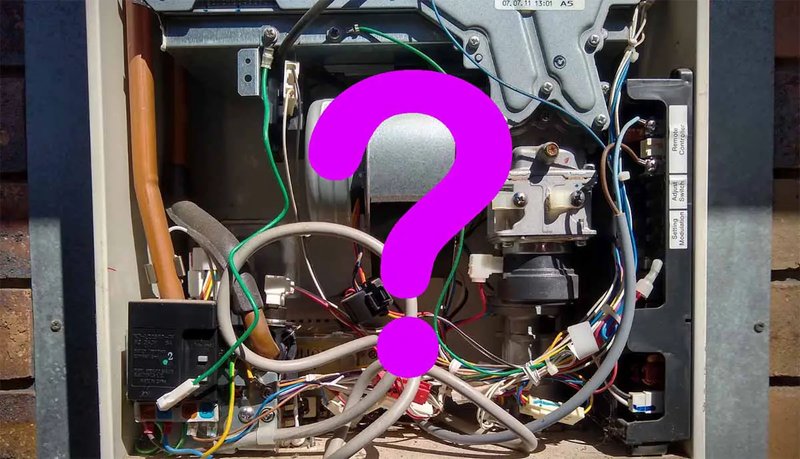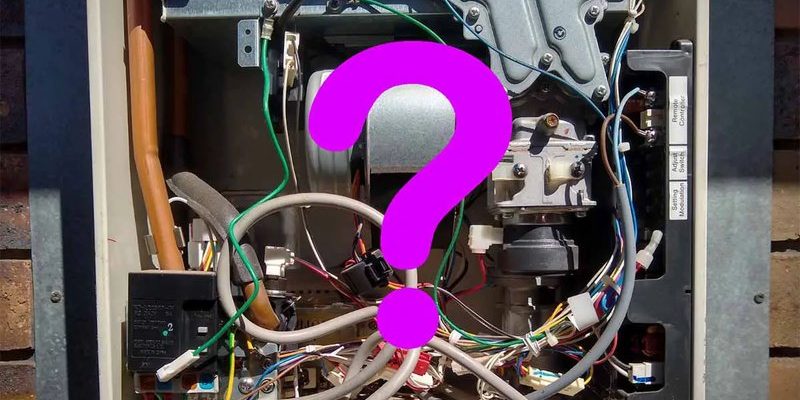
Let’s break this down. An error code, in the simplest terms, is like a secret message from your appliance telling you it needs some attention. Specifically, the E2 error code on your Bosch water heater often indicates a problem related to the water temperature sensor. Think of it as your heater’s internal thermometer, which occasionally gets a little confused. When this happens, the water heater struggles to maintain the desired temperature, which might leave you with an unexpected chilly shower. But don’t worry; with a bit of guidance, you can unravel this mystery and restore your water heater to its former glory.
Understanding the Water Temperature Sensor
The water temperature sensor is a crucial part of your Bosch water heater. It’s designed to monitor and regulate the temperature of the water so that you get the perfect hot shower every time. You could compare it to your car’s speedometer — just as you rely on it to tell you how fast you’re going, your water heater relies on the temperature sensor to keep your water warm and comfy.
When the E2 error code appears, it often indicates that this sensor is either malfunctioning or not communicating properly with the control board, much like when your phone struggles to connect to Wi-Fi. This might be due to loose connections, damage, or even debris interfering with its accurate readings. If the sensor can’t do its job, the heater might shut down as a precaution to avoid overheating — much like how you’d slow down if your car’s speedometer went haywire.
Now, while this all might sound technical, don’t feel overwhelmed. Understanding these components is like piecing together a puzzle. Once you know where each piece fits, you’ll be able to see the bigger picture and, hopefully, resolve the issue without a hitch.
Common Causes of Error Code E2
So, what exactly causes the E2 error code to make its unwelcome appearance? Let’s dive into some of the most common culprits. First up, a faulty temperature sensor. Like any other electronic component, these sensors can wear out over time. Imagine it as wearing down your favorite pair of sneakers; eventually, they just don’t perform like they used to. When the sensor starts to fail, it might send erratic signals to the control panel, resulting in that dreaded E2 error.
Another factor could be wiring issues. Electrical connections can sometimes become loose or corroded, much like a garden hose that’s not screwed on properly and starts leaking water. When this happens inside your water heater, the device might not get accurate readings, leading to operational hiccups. Additionally, such connections are critical pathways for communication between the sensor and the main control board.
Lastly, consider environmental factors. Dust and debris can accumulate inside the unit, obstructing components like the temperature sensor. Imagine a dusty book on a shelf — when you open it, it clouds the air and might obscure the words. In the same way, accumulated dust inside your heater can affect sensor performance, causing the system to misread temperatures and trigger the E2 alert.
Steps to Troubleshoot and Fix Error E2
Now that you’ve got a handle on what might cause the E2 error let’s look at how to tackle this head-on. First things first, safety is key, so make sure to turn off the power to your water heater before you start poking around. This prevents any electrical mishaps and keeps you safe. As you perform your checks, think of it as giving your appliance a mini check-up.
Start by inspecting the temperature sensor. You’ll need to locate it according to the instructions in your water heater’s manual. Once you’ve found it, look for obvious signs of damage or wear. If it seems beyond repair, you may need to replace the sensor. But if it’s just a little loose, re-securing it could resolve the issue. Reattaching the sensor is akin to tightening the lid on a jar — it ensures everything inside works as it should.
Next, examine the wiring connections. Ensure that there are no frayed wires or loose connections. Tighten these connections if necessary. If the wires look damaged, replacing them might be your best bet. It’s similar to replacing worn-out laces on your shoe; it’s a small change that restores proper function. Lastly, clean any dust or debris you find. Use a soft brush to gently clear away any build-up, taking care not to damage any sensitive components.
Preventative Tips for Future E2 Errors
Prevention is always better than cure, and the same goes for your Bosch water heater. Regular maintenance can significantly reduce the chance of encountering the E2 error code again. You might wonder, how often should I check my water heater? Ideally, a bi-annual inspection should suffice. It’s like taking your car for a regular service to keep it running smoothly.
Consider routine cleaning around and inside your heater. Keeping the area dust-free minimizes the risk of debris affecting internal components. Also, make it a habit to periodically check the sensor and wiring. Ensuring everything is snug and shipshape can avert potential problems.
Additionally, if you ever plan to make repairs or adjustments, consult the user manual or seek professional advice. Just like you’d call a mechanic for complex car issues, calling a professional for major repairs can save you from bigger headaches down the line. Remember, your Bosch water heater is an investment in comfort, and with the right care, it can continue to serve you well for years to come.
